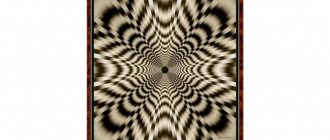Scientists have long proven that the significance of drawing in psychology is highly significant for the research being conducted. Images drawn without a purpose and negative thoughts reflect the inner world of the individual, indicating hidden experiences and worries. Because of this, psychologists often ask an adult or child to draw something on a piece of paper to obtain information. To understand how informative a regular drawing is, you need to know the decoding of individual elements, colors, and the location of the image on the sheet.
Object of study
If an adult subject systematically has problems at work or in his personal life, depression begins, or his mood changes sharply, a psychological deciphering of the person’s picture will help to establish the hidden reasons for the failures.
Elements meaning:
- A clear pattern indicates boredom.
- Inner peace and tranquility is indicated by the image of a honeycomb.
- If there are too many wavy lines, they can indicate a crisis, the presence of serious problems that prevent further development.
- Images of hearts indicate a good mood.
- Triangles are drawn by purposeful people who set goals for themselves and achieve them with any effort.
- Squares represent unemotional personalities who often hide their true feelings.
- Circles intersecting with each other indicate a lack of adequate physical activity. The personality lacks communication.
- Ovals indicate fear of conflicts, a reluctance to argue with anyone.
- Figures resembling little men in shape indicate a lack of communication.
- The sun is a symbol of sadness, sadness, melancholy.
It is important that an adult draws what he wants without any emotions or extraneous thoughts. You need to calm down in advance, try not to think about the bad
Rorschach test, pictures
3. Picture three
The third picture helps to identify the attitude of the test taker towards the people around him. Thanks to the black and red spots, you can determine how well he is adapted to social interaction.
The most common answers are two human figures, a person seeing his reflection in a mirror, a butterfly or a moth.
-Two people symbolize a fairly active social life, that society plays a huge role in his life. This means that the person has a very high level of social interaction.
-If a person sees two figures in the picture that are involved in the game, this means that he is competing with someone in real life.
-But if the patient suddenly saw people washing their hands in the ink stain, this indicates his insecurity, as well as possible paranoid tendencies.
-Looking in the mirror means that a person sees only himself and is deprived of the ability to understand others. As a rule, he tends to neglect the opinions of others, focusing solely on his own Ego.
It is generally accepted that people of traditional orientation, as a rule, see two men in the picture.
But the rest, on the contrary, look at either two women or a person of indeterminate gender in the ink stain.
However, it is impossible to say with complete confidence that this picture can be used to determine a person’s sexual orientation. Psychologists have differing opinions on this matter.
Principles of Image Analysis
To analyze a drawing of an adult subject, it is necessary to pay attention to many factors:
- composition construction;
- arrangement of figures on a sheet of paper;
- color scheme;
- line composition;
- proportions of objects;
- method of drawing individual elements;
- degree of meaningfulness of the image;
- pressure force;
- the presence of additional touches.
Features of the drawing personality:
- Interpersonal relationships with other people.
- Emotional condition.
- Degree of intellectual development.
- Individual self-esteem.
- Features of temperament.
- Possible motivation.
- Degree of development of fantasy.
Optical illusion pictures: dress, explanation of the illusion
- The famous online “virus” and the “blue or gold dress” joke are based on visual perception, depending on the individual characteristics of each person
- Once upon a time, everyone received a picture on social networks from friends with the caption “What color is the dress?” And many of your friends answered this question in completely different ways: either blue or gold
- The secret to perceiving a picture lies in how your visual organ is built and under what conditions you observe this picture.
- In each specific case, the retina of the human eye contains a certain number of cones and rods. It is the quantity that plays the role of perception: for some it will be blue, for others it will be golden
optical illusion "dress"
It is important to pay attention to the fact of lighting. look at the image in bright light and you will see a blue dress. Go into a dark room for half an hour and then look back at the picture - most likely you will see a golden dress.
Decoding the image
A psychologist will accurately decipher the drawing of an adult, but if you wish, you can try to do it yourself. The effectiveness of this psychological test is determined by two features:
- Hand movements depend on momentary emotions that can characterize a person’s inner world. This is explained by a simple example of gesturing. When communication occurs between two people, information is transmitted not only through conversation, but also non-verbally. Thanks to this, hand movements can say a lot about character.
- Usually the drawings reflect the inner experiences and aspirations of the individual. Images are a special way of communicating with the outside world. For example, when communicating with others, the conversation must be filtered through a series of filters to avoid saying something wrong. Drawing frees a person from limitations.
Typically, deciphering children's drawings is considered a more effective practice. This is due to the fact that the child saturates the image with a large number of colors and shapes, which can be used as a starting point for analysis.
Complex pictures of optical illusion with answers and explanations
Optical illusion is the unreliable perception of certain visual information. A person, looking at an illusion, incorrectly estimates its size or shape, creating a deceptive image in his mind.
The reason for erroneous perception is the structural feature of our visual organ. The physiology and psychology of vision allow us to make the wrong final result and instead of round shapes, a person is able to see square ones, and large pictures will seem small.
illusion - error of visual perception
Optical illusion can be divided into several main types:
- incorrect color perception
- misperception based on contrast
- misperception of object size
- incorrect perception of image depth
- twisted illusion
- "shifter"
- illusions that move
- 3D pictures
- optical illusion contour
The human brain can react deceptively to some images. It seems that the image moves or even changes color only due to the fact that the brain perceives the visible light of some pictures.
Location
The location of the picture on the sheet indicates values and character traits. Explanation:
- Location on the right. Denotes aspiration towards the future. The subject desires changes that change his usual life for the better. The current state of affairs does not bring satisfaction.
- The location of the picture at the bottom of the sheet. Indicates low self-esteem of the individual. An individual cannot realize himself 100%; complexities in communication appear.
- The figures are located on two edges of the sheet. Indicates dissatisfaction with certain aspects of life, dissatisfaction.
- The location of the drawing is on the left side of the sheet. Indicates a nostalgic mood, conservatism of views. Such a person does not pay attention to the present, lives in the past. Personalities who draw figures in the center of the sheet are harmonious.
Illusions of color and contrast
The human eye is imperfect, so when assessing the objects it sees, it often relies on the brightness of the background and the color environment of the object. This leads to interesting optical illusions.
Their most popular representatives are the so-called moving pictures. Their secret lies in contrast and color perception.
Optical illusion in contrasts. Errors in the perception of hue, color, and contrast affect the accurate determination of clarity, degree of brightness, colors and shades. Black and white colors are absolutely opposite. These are some of the most contrasting colors. Looking at such a picture, the eye does not understand which color to give preference to, which one is the main one.
Therefore, it seems that the pictures are moving, floating, dancing. When looking at black and white illusion pictures, it always seems that the same color always looks brighter against a light background.
Size value
The sizes of individual forms and the overall composition indicate self-esteem. Explanation:
- Drawings that take up all the free space on the sheet indicate that the person cannot achieve anything in life and tries to compensate for this with an image. More often these are extroverted people who cannot truly realize themselves in their endeavors.
- Large drawings indicate high self-esteem. Very large figures may indicate that the subject is characterized by excessive pride, vanity, and arrogance. The deep reason for the manifestation of these feelings is dissatisfaction with the usual life.
- A large amount of empty space on a sheet of paper is typical for introverts. Such people are constrained, pressed into themselves, afraid of something new. They do not trust others and are afraid to make mistakes.
Perception and emotional load of an artistic image
Today we have an unusual photographic topic and, therefore, the conversation will be one that calls for debate and reflection. Our previous “Workshops” talked about how best to convey what you saw (that is, about the objective signs of a good photograph). This time we will add emotions and, therefore, subjectivity, philosophize a little, talk about the ability to see and create impressive images, about what makes a photograph original and a photographer a master.
"Colors of a frosty morning"
Bright in all respects and a very kind photograph. Snow-covered trees, birds, a river, a church are quite common attributes of the winter landscape of the middle zone. What makes this photograph interesting and filled with emotions? Again, the social experience of the viewer. Two equally snow-covered and very different shaped trees in the foreground, as if silently communicating with each other, subconsciously associated with pairs - oppositions: youth/maturity, male-female, straight-curved. Birds on branches are located very successfully for subconscious perception. There is a triangle, rhythm and opposition of one to three. They do not take all the attention, but are quite clearly readable, enlivening the foreground with spots of color and corresponding diagonally with the church in the background. The church itself is a very vivid symbol for the vast majority of people. The multi-faceted nature of the photograph creates a very deep perspective, as if pushing the consciousness to move. The slight slope of the river bed and aerial perspective complement the frame with calm movement.
Any photograph is, as they say today, a “message”. And for it to find its addressee, the photographer must be more or less a psychologist, be aware of who the message is addressed to and how it will be received. Human perception is a complex and subjective thing (it proceeds differently for everyone) - nevertheless, it has certain characteristic features common to all people.
May psychologists forgive us for simplification and possible flaws, but since we are talking about perception, we will have to invade their territory. Just like the entire surrounding reality, a person perceives photography simultaneously on several levels: conscious, subconscious and unconscious. At the first stage, the viewer analyzes the information component, in other words, the semantic load of objects and objects depicted in the photograph. A telephone, a pen, a watch, glasses, a car, picket fences, an armchair, a TV, apples... all the objects that surround us have a very specific functional and social load. Human consciousness “recognizes” objects, analyzes their shape, texture, color, relative position and “generates” a hypothesis of relationships, giving rise to primary emotions. In parallel, a much more complex process is taking place in the subconscious: everything that makes up a photograph fits into the context of human culture and individual social experience. Take, for example, an apple – here is the Garden of Eden, and Helen of Troy, and Bunin’s Antonov apples, and grandfather’s dacha, where first love happened. Associations are born in the depths of memory; as a rule, everyone has their own. Some of them emerge into the locus of consciousness, each with all its emotional coloring, others “load” the emotional sphere of the viewer directly, bypassing awareness.
"A difficult choice that doesn't exist"
A very symbolic image that is easily filled with rich semantic content. The road, snow, bushes and three very different characters in the frame immediately lead to sad and lyrical reflections. However, despite all the calm and gloominess of the photograph, it is filled with the movement of life. Consciousness “identifies” from a social position and evaluates the roles of the characters in the frame: the dog seems to have stopped in thought “where to go” and its possible belonging to other characters or, on the contrary, a potential danger; an old woman not just wandering along the side of the road, but literally leaving “from the path of life”; a man loaded with a burden of worries, confidently walking along the “road of life.” Snow cover, monotony of the background and inexpressive bushes only enhance the overall impression without diverting attention to themselves. The subconsciously perceived diagonal of the road from the lower right to the upper left complements the feeling of movement and overcoming. The equilateral triangle formed by the subjects in this frame harmonizes the photo, and its tilt adds dynamics. Looking at this work, it’s time to think about the difficulties of life’s path and the complexity of human relationships.
By the way, the title of a photograph or the text present in the image goes through a different channel of perception (verbal communication) and therefore touches other strings of the human soul. Often a title (or comment) can enhance the impression, sometimes change it, and sometimes worsen it. Therefore, you should spend more time thinking about how the name matches the picture.
But that's not all. Simultaneously with these processes, the unconscious “I” works, about which Sigmund Freud spoke so much. For example, the same “golden ratio” carries positive emotions literally at the physiological level. The tonality of a photograph, the nature of the lines, angles and contrasts, color scheme and much more can “work” in a similar way, unable to reach consciousness, but invading the emotional sphere with its baggage. This is how an artistic image is born, providing a unique emotional context associated with photography. The scale of the viewer’s emotions ultimately determines the level of artistry of a particular visual image for a particular person.
"Light and Dark"
A very laconic photograph that simply conveys the beauty of a natural object. Here I would like to dwell on only one interesting detail - the green blades of grass do not carry any meaning. However, out of focus and difficult to read in the background, they both support the flower and introduce a bit of movement into the frame. A white flower on a dark background is pure purity and tenderness. What associations does this frame evoke, how does it affect the subconscious? Generalizations are hardly reasonable here, since the beauty of nature is abstract and affects each of us very subjectively. Agree, by and large, it does not matter which emotions caused by strong photographic work prevail: bright joy or no less bright sadness, or anger, or malice. After all, art exists to awaken feelings and provide emotional experience, to warn and support, to inspire hope and ennoble. Although, of course, any normal person wants positive emotions, and therefore the desire for beauty, light and joy is so natural. Emotions! Why do we prioritize them? Probably because everything a person strives for is in one way or another connected with the desire for a certain state. Everyone has their own state, some need an adrenaline drive, some need solitude and peace, but we all want emotional comfort. This is how nature programmed us. Try to refute if you disagree. But let's get back to practice. Question: how to achieve bright, emotional photographs? Of course, there is no universal recipe, and we did not set ourselves the goal of finding one. Today we want to formulate one simple and most important rule: photography should be emotional. It may be taken in violation of all laws and principles, but a good photograph should never leave the viewer indifferent. It is the feelings of the viewer that the artist must address, since perception on the conscious level, as paradoxical as it may sound, is more subjective and less emotional than on the unconscious. But this is about photography as an art, about appealing to large audiences, if we take it completely globally - to all of humanity.
"Do not come to me…"
This photograph can hardly be called a portrait in the literal sense, but it is interesting to look at. The first thing that catches your eye is the disproportionately large hand in the foreground. In size and weight, she doesn’t just compete with the face, she dominates. This hand position clearly does not add femininity and attractiveness to the image. A glass of cognac is also not quite a feminine attribute and is also in the foreground. This picture could be called a “portrait of a hand with cognac.” However, together with the position of the head and facial expression, a fairly complete image of detachment and independence is created, as if fenced off from the viewer. Even the cross-shaped ring, which is not very clearly present in the frame, seems to ward off evil spirits. And you must admit, there is something attractive about this image. A subconscious desire arises to break this detached solitude.
True, most amateur photographers do not set such goals, but take photographs for pleasure - both their own and those of loved ones. What is important in this case? Most often they photograph portraits - individual or group: Vasya, Masha and Petya in nature, Masha and I against the backdrop of the Rhine Cathedral, just Masha in the open air. And here one statement - me, Masha and the cathedral cannot be done; it is necessary that Masha is satisfied with the way the color of the cathedral masonry sets off the natural whiteness (or the soft warmth of a tan) of her skin. Simply put, you need to give a compliment. And the better you know the character you are photographing, the better you imagine how he would like to see himself, the higher the likelihood that your Masha will subsequently place the card in a family photo album and will look at it with pleasure, and at you with admiration . Emotions come first!
Time passes, experience accumulates, and a person with a camera has a desire to take a photo image that conveys his mood, state of mind. There is a desire to share what you see, a desire for self-expression and self-realization through photography. That’s when, in fact, the Photographer is born.
And to close the topic, a few words about the conscious and unconscious in the work of a photographer. About whether it is possible to measure harmony with algebra and whether it is worth striving for it. You can take a camera, point it at any object and try to build a composition: in accordance with the three-thirds rule, looking for diagonals, triangles, “points of attention”, focusing on the foreground or background (we wrote in detail about building a harmonious composition in the issue) - this conscious part of the work. You can do it differently: do not build a frame from what first got there, and not build it at all, but look through the viewfinder for some beautiful object, a fragment of reality that will not leave you indifferent and will not leave the viewer indifferent, being taken out of the event context . A constantly practicing photographer isolates such “pictures” even without a camera in his hands. He does not try to create “beauty” through technical techniques, but sees it, and only then, with the help of knowledge and experience, using technical techniques and rules of composition, he tries to emphasize, make it brighter, and convey his impressions to the viewer as much as possible. In this case, the main work takes place on a subconscious level, which means there is a greater chance that the photograph will find a response in the hearts of viewers: let us repeat once again, unconscious perception is more objective than conscious. Thus, the skill of a photographer is manifested in the ability to photograph (and above all see) ordinary things in an extraordinary way, namely ordinary things, seen thousands and thousands of times, and only in photographs for the first time “playing out” in a special way, charging with vivid emotions. Here we must make a reservation: the ability to see is like an ear for music - for some it is better, for others it is worse, for others it is absolute. Those who are deprived of this ability, using simple rules, many of which we have already talked about, can create high-quality, technically flawless photographs. But to create talented photographs, for photographs as works of art, the ability to see is necessary, and it, like an ear for music, can and should be developed, turning it into a precise instrument. And most importantly, “the soul must work...”, then both vision and skill will develop.
"No man is an island"
Very dynamic, expressive photography. Loneliness, the piercing light, the prickly cold. A tilted horizon line is usually undesirable, but here it is this technique that fills the photo with movement, struggle and overcoming. What associations, thoughts, emotions do you have? Try to formulate it yourself.
To a large extent, the subconscious perception of an image is influenced, of course, by color. As you know, color can be calm and aggressive, warm and cold. By including a certain set of colors in your frame, harmonizing the overall tonality or creating a contrasting, contradictory range, you can set the viewer to a particular emotional state. Create a kind of prelude for subsequent perception. The emotional load of the frame can be further enhanced by the shape of the objects included in the frame. The emotional impact on the viewer will depend on which lines of the shape of objects will prevail in the frame. Smooth, rounded shapes and lines in the frame set up calm, positive emotions on an unconscious level, while sharp corners and hard lines can, on the contrary, emphasize the rhythm, movement, expression and even aggression of the photograph.
_______________________
Applicable colors
This parameter is considered the main one when analyzing images that children draw. Adults typically draw with one pencil, but it is possible to draw with different colors. Meaning of flowers:
- Shades of yellow speak of comfort and tranquility.
- The color purple denotes the development of imagination and fantasy.
- Shades of red can indicate excessive aggression and impulsiveness. Such people constantly splash out accumulated energy on others.
- Gray color - the routine of monotony overcomes a person, he needs something new.
- Black speaks of a depressed state, strong internal experiences that can cause depression. The individual needs to identify an internal problem and cope with it.
- The color blue represents self-absorption. The individual is thinking about how to solve a problem from the past so as not to worry about it in the present-future.
- Shades of green indicate stubbornness, self-sufficiency, independence, and the desire to assert oneself.
Many are characterized by shading of individual elements of the picture. If there is shading, the subject feels squeezed within the framework, he does not feel freedom. If there is no shading, the person is ready to develop further and will accept changes.
The coolest optical illusions
The human brain is an amazing thing. He himself can complete reality. Even where there is none. An optical illusion is an optical illusion, that is, seeing objects that does not correspond to reality.
The coolest optical illusions are collected here; you can be convinced that the perception of the human visual organ is something incredible!
Be careful when browsing. Some images cause headaches, tearing, and disorientation in space.
Line types
Lines can tell a lot about a character. They can have sharp corners, be semicircular, sinuous, discontinuous or solid. The line decoding method is suitable for testing children and adults. Designations:
- Broken line - unstable position, lack of self-confidence.
- A large number of sharp corners indicates hidden aggression.
- Large voluminous figures indicate emotional openness and a broad outlook.
- The figures are small, narrow - the desire to adhere to the rules, modesty, enslavement.
- Soft curves, rounded lines - more often women draw images with such elements. They indicate a person's flexibility in making various decisions.
- Geometric shapes—difficulty in perceiving change, the presence of aggression.
- Fine lines applied without pressure. The individual wants to distance himself from society and does not want to communicate with others. This manifests itself in attempts to avoid attention from the environment.
- Lines drawn with pressure. They indicate a person’s desire to stand out among others.
- Solid lines - flexibility, confidence, emotional stability. Such individuals are ready to cope with any difficulties to achieve their goals.
Take a Rorschach test
1. Picture one
The answers allow the psychologist to determine how a person copes with stressful situations and emerging problems.
The most common answers when viewing the first picture are a bat, a butterfly, a moth, an angel.
-For some, a bat is a symbol of evil spirits and something unpleasant. For others, it is overcoming a difficult path and rebirth.
-Butterflies indicate a transitional period in life, hinting at transformation and the desire to change, grow and cope with emerging difficulties.
— A person who sees a moth in an ink stain is most likely dissatisfied with his appearance; he also believes that his talents are not appreciated by others.
He is prone to bouts of irritability and weakness.
But the outline of an animal’s muzzle can signal a serious problem within a person, an unwillingness to resolve these difficulties, and the fears that haunt him.
This could also be a sign of paranoia.
2. Picture two
The second picture is presented in the form of a black and red inkblot.
As a rule, people see something sexual in this blot.
How a person reacts to this spot describes their ability to control their feelings, including anger, resentment, and physical pain.
Most respondents associate red spots with blood.
As a rule, people look at the following objects in an inkblot: two figures, a person in the process of prayer, their own reflection in a mirror, or some kind of animal.
- If a person sees two figures in the spot, this means that, most likely, he is very addicted to sex or is obsessed with his partner.
- If someone saw a person reflected in a mirror in an inkblot, this means that the subject is not devoid of narcissism. He is also characterized by egocentrism and selfishness. For him, his own “I” is above all.
-Seeing a dog means that the person is a wonderful and loyal friend, ready to do a lot for the sake of friendship, even to the detriment of himself.
- If the subject saw an elephant, this means that the person is endowed with a good memory, a sharp mind and an excellent sense of humor.
-If you see something negative and repulsive in the spot, this indicates the need to face your own fears.
-The bear is associated with aggression, competition and the desire for independence.
The meaning of drawn objects
Decoding the overall picture depends on what objects or figures the person drew. Designations:
- Landscape without people. Lack of understanding of others, difficulty communicating with other people.
- Subject drawings. The nature is active, decisive, ambitious.
- Images of animals and people. Desire to receive more communication. In addition, the subject may have serious problems that he cannot solve alone and needs support.
- Repeating objects, shapes, ornaments. Such individuals try to hide their experiences and do not want to communicate openly.
A psychological portrait helps a psychologist see a person’s inner world, identify hidden disorders and desires. If you wish, you can use the practice yourself. To do this, you need to draw a picture without extraneous thoughts, decipher its individual details.
Visual illusions - what are they?
Optical illusions are an optical illusion of the human brain. After all, when looking at a picture, the eye sees one image, but the brain protests, claiming that this is something completely different. That is, this is a discrepancy between the actual and expected visual perception of an object, when the human eye sees something that cannot be in reality.
The entire visual system is responsible for perception, including the eyes, nerve cells and endings that help the visual signal enter the brain, directly to the part that is responsible for the visual perception of objects and phenomena. A person, knowing the features of vision, analyzes the visible picture, understands when the image is real, when he is being deceived.
You should not take pictures - illusions - seriously, trying to unravel them, this is just how the organs of vision work, this is how the human brain processes the visible reflected light from the image.
The meaning of drawings in psychology
A drawing of a person will tell you a lot. In the modern world, even without the help of specialists, you can decipher a drawing, guided by the basic rules that can be found in any sources on psychology. This method helps you get to know yourself better, as well as any other person.
Drawing
The effectiveness of drawings can be proven as follows:
- Through drawing we show our thoughts. When we are asked a question, before answering it is worth passing everything through certain organs, and with the help of paper and pencil we feel complete freedom of action.
- We draw with the help of muscles, which are subsequently displayed in the drawings. Each line and size of the drawing is the nature of the movement of our hands. These movements are guided by our emotional state, temperament, and character. Even when we are in the company of people, and simply carefully observing the gestures and facial expressions of our interlocutor, we can tell a lot about a person. The hand reflects our mood and how we feel at the moment.
Psychologists, in order to analyze the current situation, ask to bring ready-made drawings or put out paper and pencil, and during the conversation ask the person to draw. Random drawings that are collected over a long period will tell much more and will help to assess the situation more objectively than momentary ones made under the supervision of a specialist.
Lines
The meaning of drawings created by children occupy a place of honor in psychology. Children's drawings are diverse, not only in meaning, but also in color, they are easier to decipher and analyze. The content of the image alone will not be enough to learn to understand and analyze the drawings of both an adult and a child. Even minor details, such as color scheme, location, lines will help to fully characterize a person.
The mystery of children's drawings
Children mostly draw simple drawings - houses, animals, people around them, cartoon characters.
Even without resorting to the help of professionals, you can easily analyze the meaning of a child’s drawing and understand what is bothering him and what needs to be paid attention to.
- A landscape in which no living creatures are present indicates loneliness and problems with peers.
- House indicates fatigue, the need to rest.
House
- Monsters show that the child is worried, afraid and does not feel entirely comfortable. This drawing will almost always show what exactly the child is afraid of.
- A family in a child's drawing can demonstrate the true vision of a family. A bright and colorful picture with family members indicates that everyone in their family understands each other and enjoys every day spent together. In the picture, one of the family members is missing, indicates a lack of communication with this person. If the drawing is made in black and gray tones, you should think about whether everything in your family is as good as it seems at first glance. The one whom the child portrays as the tallest and most likely to show who is in charge in the family.
Family
- The tree is a symbol of knowledge and development. If a tree is drawn with roots, then the baby thinks independently and does not need outside help. If the tree trunk is bent, this indicates that the child has experienced stress and now feels uncomfortable.
- Animals indicate inner peace.
- If a child pretends to be a person , this means that he lacks communication with peers. It is also worth paying attention to the color with which the person was drawn; if these are dark colors, then the baby is afraid of someone.
- A drawing of oneself shows that the child is ready for self-discovery as well as self-expression. Even small details can tell a lot, for example, large ears indicate a daring character and a desire to be the center of attention, short legs indicate low self-esteem.
The baby draws
To make sure that the meaning of the drawings is correctly deciphered, try to find your old images and compare them with the given rules. Drawings do not fully characterize a person, but only help to get to know him a little better.










